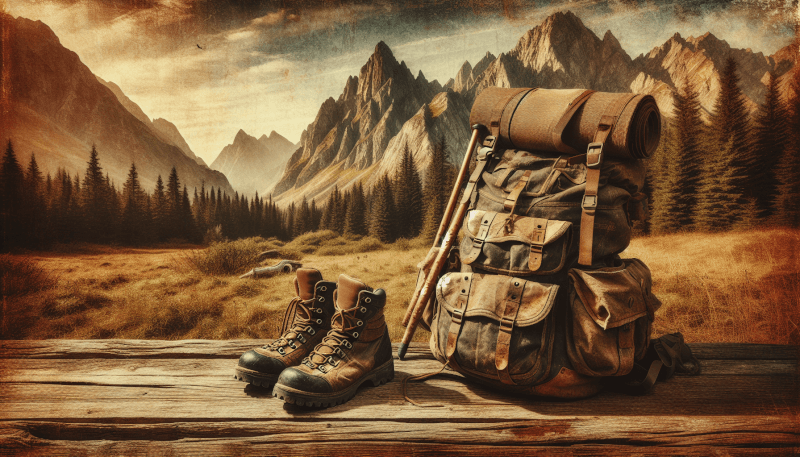Picture yourself sitting around a crackling campfire on a starry night, surrounded by nature and a group of enthusiastic adventurers. Now imagine the excitement when you effortlessly join in their conversations about backcountry trips, trail magic, and bear bags. In this article, we will unravel the top camping lingo every adventurer should know, giving you the tools to connect with fellow outdoor enthusiasts and become a true camping aficionado. From trail talk to wild lingo, let’s embark on a linguistic journey that will enhance your camping experience and have you speaking like a seasoned adventurer in no time.
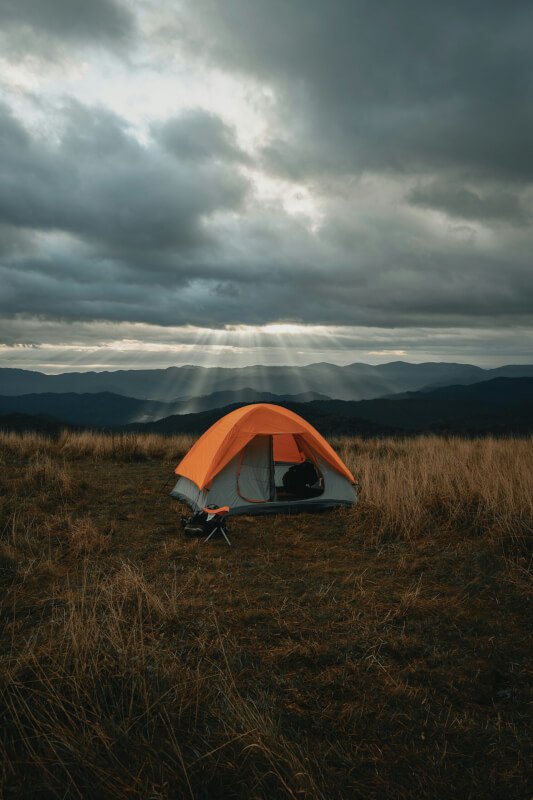
1. Types of Camping
Camping is a popular outdoor activity that allows you to connect with nature and experience the great outdoors. There are various types of camping, each offering a unique experience. Whether you prefer sleeping in a tent, RV, or even a luxurious glamping setup, there is something for everyone.
1.1 Tent Camping
Tent camping is a classic and traditional way to experience the outdoors. It involves setting up a tent, usually made of nylon or polyester, and camping in it. Tent camping allows you to truly immerse yourself in nature, as you sleep under the stars and listen to the sounds of the wilderness. It is a versatile and affordable option, suitable for both solo adventurers and families.
1.2 RV Camping
RV camping, also known as motorhome camping, offers a more comfortable and convenient camping experience. It involves traveling and camping in a recreational vehicle (RV) or motorhome. RVs are equipped with amenities such as a kitchen, bathroom, and sleeping quarters, providing a home-like experience in the great outdoors. RV camping is a popular choice for those who enjoy the comforts of home while still being able to enjoy the beauty of nature.
1.3 Backpacking
Backpacking is a type of camping that involves carrying all necessary gear and supplies in a backpack and hiking to a remote camping location. It allows you to explore and camp in more rugged and off-the-beaten-path areas that are not accessible by vehicles. Backpacking requires careful planning and preparation, as you need to consider weight, durability, and functionality of your gear. It is a thrilling and adventurous way to experience the wilderness and test your outdoor skills.
1.4 Glamping
Glamping, a portmanteau of “glamorous” and “camping,” offers a luxurious and upscale camping experience. It combines the beauty of nature with the comforts of a hotel or resort. Glamping accommodations can range from safari tents and yurts to treehouses and eco-domes, each providing unique and stylish accommodations. Glamping allows you to experience the great outdoors without sacrificing comfort or style.
1.5 Car Camping
Car camping, also known as drive-up camping, is a convenient and accessible way to camp. It involves driving your car to a designated campsite and setting up your tent or sleeping in your car. Car camping allows you to bring more gear and supplies, as you have easy access to your vehicle. It is a family-friendly option and a popular choice for those who enjoy comfort and convenience while still enjoying the beauty of nature.
2. Essential Gear
When it comes to camping, having the right gear is essential for a successful and enjoyable experience. From a reliable sleeping bag to a functional camp stove, there are certain items that every camper should have. Here are some essential pieces of gear that should be on your camping checklist:
2.1 Sleeping Bag
A good sleeping bag is essential for a comfortable night’s sleep in the great outdoors. It should be warm, lightweight, and durable. Consider the temperature rating of the sleeping bag, as it will determine its performance in different weather conditions. Look for one that is suitable for the climate and season in which you will be camping.
2.2 Tent
A tent is your home away from home while camping. It provides shelter and protection from the elements. When choosing a tent, consider the number of people it needs to accommodate, its weight, and ease of setup. Look for features such as a rainfly, mesh panels for ventilation, and a strong and durable frame. The right tent will provide a comfortable and secure shelter during your camping trip.
2.3 Camp Stove
A camp stove allows you to cook meals and boil water while camping. It is a convenient and efficient alternative to cooking over an open fire. Choose a camp stove that is lightweight, compact, and easy to use. Look for one with adjustable heat settings and a stable base to prevent accidents. A reliable camp stove will make mealtime much easier and enjoyable.
2.4 Headlamp
A headlamp is an essential piece of gear for any camper, especially during the nighttime. It provides hands-free illumination and allows you to navigate your campsite, read a book, or perform tasks in the dark. Look for a headlamp that is lightweight, has adjustable brightness settings, and is water-resistant. It will be your trusted companion during those late-night trips to the restroom or while exploring the wilderness after sunset.
2.5 Campsite
Choosing the right campsite is crucial for a successful camping trip. Consider factors such as accessibility, proximity to water sources and restrooms, and the availability of shade. Look for a flat and level surface to pitch your tent and set up your camp. Take note of any rules and regulations specific to the campsite and ensure you leave the campsite as you found it.
2.6 Cooler
A cooler is necessary to keep perishable food and beverages fresh during your camping trip. Look for a cooler that is lightweight, durable, and has good insulation. Consider the size of the cooler based on the length of your camping trip and the number of people it needs to accommodate. A well-chilled cooler will ensure that you have refreshing drinks and delicious meals throughout your camping adventure.
2.7 Campfire
A campfire is a quintessential part of the camping experience. It provides warmth, lighting, and the opportunity to cook meals and roast marshmallows. Follow proper campfire safety guidelines, such as ensuring you have a designated fire pit, keeping the fire small and contained, and fully extinguishing the fire before leaving the campsite. A campfire creates a cozy and inviting atmosphere in your campsite.
2.8 Hammock
A hammock is a comfortable and relaxing addition to your camping gear. It allows you to rest and unwind while enjoying the beauty of nature. Look for a hammock that is lightweight, easy to set up, and made of durable materials. Consider the weight capacity and ensure it can support your weight. Whether you use it for lounging or sleeping, a hammock can elevate your camping experience and provide a peaceful retreat.
2.9 Trail Map
A trail map is essential for navigating hiking trails and exploring the wilderness. It provides information on trail difficulty, distance, elevation, and points of interest. Carry a detailed trail map and familiarize yourself with the route before setting off on a hike. It will help you stay on track and ensure a safe and enjoyable hiking experience.
2.10 Bear Canister
If you are camping in bear country, a bear canister is crucial for storing your food and other scented items. Bears have a strong sense of smell and can be attracted to the scent of food. A bear canister is a sturdy and lockable container that keeps your food secure and inaccessible to bears. It is an important safety precaution to prevent bear encounters and protect both campers and wildlife.
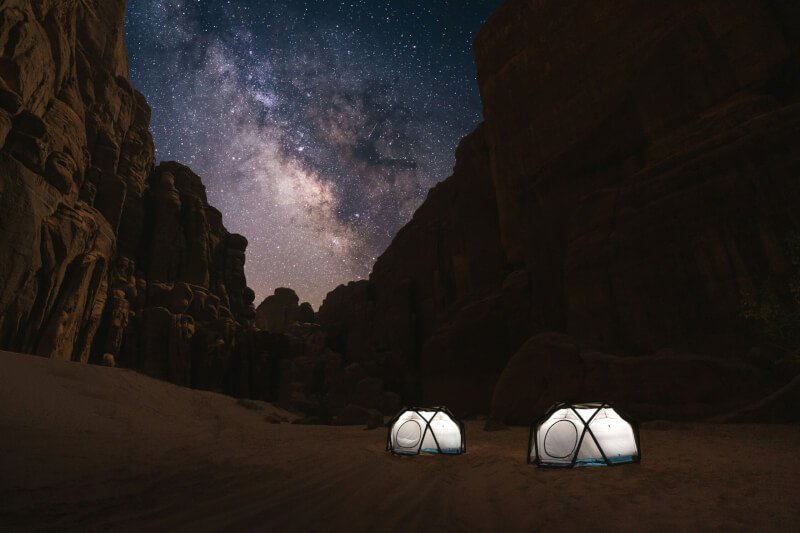
3. Campsite Setup
Setting up your campsite properly is key to a comfortable and enjoyable camping experience. From pitching a tent to ensuring bear safety, there are certain steps you should follow for a successful campsite setup.
3.1 Pitching a Tent
Pitching a tent is one of the first tasks when setting up a campsite. Choose a flat and level surface for your tent and clear away any rocks, sticks, or debris. Lay out the tent fabric and assemble the tent according to the manufacturer’s instructions. Start with the poles and gradually secure the tent to the ground using stakes or guylines. Ensure the rainfly is properly attached to protect against rain and provide ventilation. A well-pitched tent will provide a comfortable and secure shelter during your camping trip.
3.2 Campsite Layout
Consider the layout of your campsite to maximize efficiency and comfort. Set up different areas for cooking, eating, sleeping, and relaxing. Keep the cooking area away from the sleeping area to prevent food smells from attracting wildlife. Create designated paths and walkways within your campsite to prevent tripping hazards and ensure easy navigation. A well-planned campsite layout will enhance the overall organization and functionality of your camping setup.
3.3 Bear Safety
If you are camping in bear country, it is crucial to follow proper bear safety protocols. Store your food, trash, and scented items in a bear canister or hang them from a high tree branch using a bear bag. Keep a safe distance from bears if you encounter them and never approach or feed them. Make noise to alert bears of your presence and avoid surprising them. Familiarize yourself with bear safety guidelines specific to the area you are camping in and be prepared to take necessary precautions.
3.4 Water Source
Access to clean water is essential for camping. Before setting up your campsite, locate a reliable water source such as a stream, lake, or water spigot. Ensure the water source is safe for consumption by filtering, boiling, or using water purification tablets. Carry enough water containers or a water bladder to transport water back to your campsite. Proper hydration is crucial for staying healthy and comfortable while camping.
3.5 Fire Pit
If campfires are allowed at your campsite, ensure you have a designated fire pit. Clear away any flammable materials such as dry leaves, grass, and branches from the fire pit area. Build the fire pit on a fire-resistant surface such as bare soil or rocks. Keep the fire small and manageable, and always keep a bucket of water or a fire extinguisher nearby for safety. Enjoy the warmth and ambiance of a campfire responsibly and follow any fire regulations specific to the campsite.
3.6 Leave No Trace
When setting up your campsite, it is important to follow the principles of Leave No Trace. This means minimizing your impact on the environment by leaving your campsite as you found it. Practice proper waste management by packing out all trash and disposing of it in designated trash bins. Respect wildlife and their habitats by keeping a safe distance and not disturbing their natural behavior. Leave No Trace principles ensure that future campers can also enjoy the beauty of nature.
3.7 Food Storage
Proper food storage is crucial to prevent wildlife encounters and protect both campers and wildlife. If you don’t have access to a bear canister, hang your food and scented items from a high tree branch using a bear bag. Choose a sturdy branch that is at least 12 feet high and 4 feet away from the trunk. Use a rope or cord to hang the bag, ensuring it is at least 10 feet off the ground and 4 feet away from the tree trunk and any branches. Proper food storage will help prevent wildlife from becoming habituated to human food and reduce the risk of dangerous encounters.
3.8 Camp Kitchen
Setting up a functional camp kitchen will make mealtime much easier and enjoyable. Designate an area for food preparation and cooking. Use a camp table or a flat surface to set up your camp stove, cutting board, and cooking utensils. Store food in sealable containers or coolers to prevent contamination and keep it fresh. Keep your cooking area clean and organized to prevent foodborne illnesses and attract unwanted pests. A well-equipped and organized camp kitchen will make cooking in the great outdoors a breeze.
3.9 Tarp Setup
Using a tarp is a versatile and practical way to provide additional shelter and protection at your campsite. It can be used as a rain shelter, shade canopy, or ground cover. When setting up a tarp, ensure it is securely attached to trees or other sturdy objects using guylines or ropes. Create a slight slope to allow water to run off and prevent pooling. A properly set up tarp can provide extra protection from the elements and increase the overall comfort of your campsite.
3.10 Guy Lines
Guy lines are ropes or cords used to secure tents, tarps, and other camping equipment. They add stability and help prevent your gear from being blown away by strong winds. When setting up your tent or tarp, ensure that all guy lines are properly tensioned and anchored to the ground or nearby objects. Adjust the tension as necessary to ensure stability and prevent flapping or sagging. Guy lines are an essential part of a secure and well-organized campsite setup.
4. Campfire Cooking
One of the highlights of camping is cooking delicious meals over a campfire. From classic Dutch oven recipes to roasting marshmallows, there are various campfire cooking techniques and recipes to explore.
4.1 Dutch Oven
A Dutch oven is a versatile and indispensable cooking tool for campfire cooking. It is a thick-walled pot with a tight-fitting lid, designed to retain and distribute heat evenly. Dutch ovens can be used to simmer stews, bake bread, roast meats, and even cook desserts. The key to successful Dutch oven cooking is managing the heat by arranging coals on the top and bottom of the pot. With a little practice, you can create mouthwatering meals that rival those from a gourmet kitchen.
4.2 Roasting Sticks
Roasting sticks or skewers are essential for cooking hot dogs, sausages, and marshmallows over the campfire. Look for long, heat-resistant sticks or metal skewers that can easily be held over the fire. When roasting food, carefully rotate the stick to ensure even cooking and prevent burning. Roasting sticks add a fun and delicious element to your campfire cooking experience.
4.3 Foil Packets
Foil packets, also known as hobo packs, are a convenient and easy cooking method for camping. They involve wrapping ingredients in aluminum foil and cooking them over the campfire. Foil packets can contain a variety of ingredients such as vegetables, meat, and seasonings. Place the foil packet directly on the coals or grill grates and cook until the ingredients are tender and flavorful. Foil packets are a delicious and mess-free way to cook meals while camping.
4.4 Marshmallow Toasting
Toasting marshmallows over a campfire is a classic camping activity that brings joy to campers of all ages. Use a roasting stick or skewer to carefully hold the marshmallow over the fire. Rotate it slowly to evenly toast the marshmallow until it reaches your desired level of golden brown or gooeyness. Once toasted, sandwich the marshmallow between graham crackers and chocolate for a delicious campfire treat known as a s’more. Marshmallow toasting is a fun and tasty way to end a day of camping.
4.5 Cast Iron Skillet
A cast iron skillet is a versatile and durable piece of cookware for campfire cooking. It can be used to fry bacon, sauté vegetables, sear meat, or bake cornbread. Cast iron retains and distributes heat evenly, making it ideal for cooking over an open fire. Proper care and maintenance of a cast iron skillet will ensure its longevity and enhance its cooking performance. With a cast iron skillet, you can prepare delicious and hearty meals that will satisfy any hungry camper.
4.6 Campfire Grate
A campfire grate is a metal grid or grill that can be placed over the fire for direct cooking. It provides a stable and elevated surface for cooking meats, vegetables, and other foods. Look for a campfire grate that fits your fire pit and has adjustable height settings. Use tongs or a spatula to flip and turn the food as it cooks. A campfire grate enhances the cooking experience by allowing you to achieve grill marks and control the level of heat.
4.7 Cooking Tripod
A cooking tripod is a versatile and portable cooking accessory that allows you to hang pots and pans over a campfire. It consists of three legs and a chain or hook to suspend the cooking vessel. Adjust the height of the tripod to control the proximity of the cookware to the fire. Cooking with a tripod adds a fun and rustic element to your campfire cooking and allows you to prepare a wide range of dishes.
4.8 Fire Pit Cooking
Cooking directly in a fire pit is a traditional and primitive method of campfire cooking. It involves placing ingredients directly in or on the hot coals of the fire. You can cook foods such as potatoes, corn on the cob, or even whole fish wrapped in foil. Use long-handled tongs or a shovel to move the coals and adjust the cooking temperature. Fire pit cooking allows you to experience the true essence of campfire cooking, with the flavors and aromas of the fire infusing into your meals.
4.9 Camp Coffee
No camping trip is complete without a steaming cup of camp coffee to start the day. There are various methods to make coffee while camping, from cowboy coffee to French press. Cowboy coffee involves boiling water in a pot, adding coarsely ground coffee, and allowing it to steep before pouring through a strainer into cups. French press coffee involves steeping coffee grounds in hot water and using a plunger to separate the grounds from the liquid. Choose a method that suits your preference and enjoy the rich and bold flavors of camp coffee.
4.10 Camp Recipes
Campfire cooking provides endless opportunities for delicious and creative meals. From hearty stews and casseroles to grilled vegetables and campfire pizzas, there are countless campfire recipes to try. Look for recipes that use simple and portable ingredients, and can be easily prepared and cooked over a campfire. Get creative with your campfire cooking and explore new flavors and techniques that will impress your fellow campers.
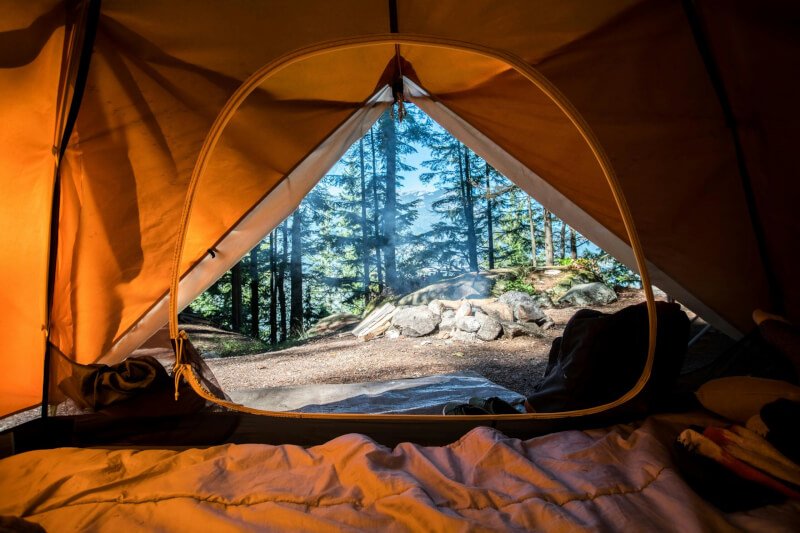
5. Types of Campers
Camping attracts a diverse range of people, each with their own preferences and camping styles. Whether you are a novice camper just starting out or an experienced adventurer seeking new challenges, there is a type of camping that suits your needs.
5.1 Novice Camper
Novice campers are those who are new to camping and are just starting to explore the outdoors. They may be unfamiliar with camping gear, techniques, and campsite etiquette. Novice campers often start with car camping or organized camping trips where the essentials are provided. They are eager to learn and gain experience and may eventually venture into more challenging camping styles.
5.2 Experienced Camper
Experienced campers are those who have been camping for a while and have developed their camping skills and knowledge. They are comfortable with various camping styles and have a good understanding of gear and outdoor etiquette. Experienced campers often seek out more remote and challenging camping locations and may participate in activities such as backpacking, rock climbing, or kayaking. They enjoy the freedom and self-reliance that camping provides and are always up for new outdoor adventures.
5.3 Family Camper
Family campers are those who camp with their families, including children of all ages. Family camping trips often involve car camping or RV camping, as they provide comfort and convenience for families. Family campers prioritize safety, comfort, and fun, and choose camping locations that offer activities suitable for children. They enjoy spending quality time together in nature and creating lasting memories.
5.4 Group Camper
Group campers are those who prefer camping with a larger group of friends or family members. They enjoy the camaraderie and shared experiences that come with camping in a group. Group camping trips often involve multiple tents or RVs, and campers take turns preparing meals and organizing activities. Group campers prioritize socializing, bonding, and creating a sense of community during their camping adventures.
5.5 Solo Camper
Solo campers are those who embark on camping trips alone. They seek solitude, self-reflection, and a sense of independence that comes with solo camping. Solo campers often choose backpacking or remote camping locations where they can immerse themselves in nature and disconnect from the outside world. Solo camping requires self-sufficiency and careful planning, but it also offers a unique opportunity for introspection and personal growth.
6. Outdoor Skills
To fully enjoy and thrive in the outdoors, it is important to develop certain outdoor skills. From basic knot tying to wilderness navigation, these skills will enhance your camping experience and ensure your safety and well-being.
6.1 Knot Tying
Knot tying is a fundamental skill for camping and outdoor activities. It allows you to secure gear, create shelters, and perform other tasks. Learn basic knots such as the square knot, clove hitch, and bowline. Practice tying and untying knots until you can do them quickly and efficiently. Knot tying skills will come in handy in various camping situations and can be a lifesaver in emergency scenarios.
6.2 Building a Fire
Knowing how to build a fire is an essential outdoor skill. It provides warmth, cooking fuel, and a sense of security. Learn different fire-starting methods such as using matches, lighters, or fire starters. Familiarize yourself with different fire lay structures, such as the teepee or log cabin, to optimize airflow and generate heat. Practice building and maintaining a fire in various weather conditions to hone your fire-building skills.
6.3 Water Purification
Access to clean and safe drinking water is essential while camping. Learn different methods of water purification such as filtering, boiling, or using water purification tablets. Familiarize yourself with water sources in your camping area and assess their reliability and safety. Develop the habit of treating water before consumption to prevent waterborne illnesses and stay hydrated during your camping trip.
6.4 Navigation
Navigation skills are crucial for hiking, backpacking, and exploring the wilderness. Learn how to read maps, use a compass, and navigate using natural landmarks and features. Familiarize yourself with basic orienteering skills, such as understanding topographic maps and plotting a route. Practice navigation skills in both familiar and unfamiliar terrain to build confidence and improve your ability to navigate safely in the outdoors.
6.5 Wildlife Safety
When camping, it is important to respect and coexist with wildlife. Learn about the wildlife native to your camping area and understand their behaviors and habits. Familiarize yourself with wildlife safety guidelines and protocols, such as how to respond to encounters with bears, mountain lions, or venomous snakes. Develop habits such as proper food storage, making noise to alert animals of your presence, and keeping a safe distance from wildlife. Wildlife safety skills are essential for both the well-being of campers and the protection of wildlife.
6.6 First Aid
Basic first aid skills are essential for any outdoor adventure. Learn how to treat common camping injuries such as cuts, burns, sprains, and insect bites. Familiarize yourself with basic first aid techniques such as CPR, the Heimlich maneuver, and splinting. Carry a well-stocked first aid kit and know how to use its contents. Consider taking a wilderness first aid course to gain more in-depth knowledge and skills for handling outdoor emergencies.
6.7 Leave No Trace Principles
Leave No Trace is a set of principles that promotes responsible outdoor recreation and minimizes the impact on the environment. Learn and practice the seven principles of Leave No Trace: plan ahead and prepare, travel and camp on durable surfaces, dispose of waste properly, leave what you find, minimize campfire impacts, respect wildlife, and be considerate of other visitors. By adhering to these principles, you can preserve the natural beauty of camping areas and ensure their sustainability for future generations.
6.8 Setting Up a Tarp
Knowing how to set up a tarp is a valuable skill for camping. Tarps can provide shelter from rain, shade from the sun, and protection from wind. Learn different tarp configurations such as the A-frame, lean-to, and diamond pitch. Practice setting up a tarp in various weather conditions and terrain to become proficient in tarp setup. The ability to create a dry and comfortable shelter using a tarp is invaluable during camping trips.
6.9 Packing a Backpack
For backpackers, knowing how to properly pack a backpack is essential for weight distribution and balance. Learn how to organize and pack your gear efficiently to optimize space and minimize strain on your body. Consider the weight and accessibility of each item and pack them accordingly. Familiarize yourself with different backpacking gear such as sleeping bags, tents, and cookware, and understand how to pack them to maximize usability and comfort.
6.10 Trail Etiquette
When hiking or backpacking, it is important to be mindful of trail etiquette to ensure a positive and respectful experience for everyone. Yield the right of way to uphill hikers, keep noise levels to a minimum, and stay on designated trails to protect fragile ecosystems. When passing other hikers, give a friendly greeting or step to the side if space allows. Practice Leave No Trace principles and leave the trail and surrounding areas as you found them. Trail etiquette promotes harmony and safety among hikers and minimizes the impact on the natural environment.
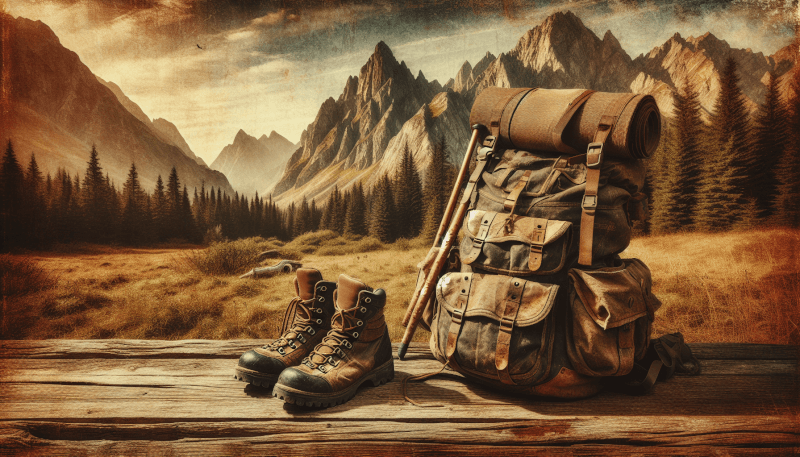
7. Adventure Activities
Camping opens up a world of adventure activities that allow you to explore and experience the natural beauty of the outdoors. From hiking towering peaks to kayaking serene lakes, there are various activities that cater to different interests and skill levels.
7.1 Hiking
Hiking is one of the most popular adventure activities while camping. It allows you to explore scenic trails, immerse yourself in nature, and challenge yourself physically. Choose trails that match your fitness level and preferences, whether it’s a leisurely stroll through a meadow or a challenging ascent to a mountain summit. Hiking offers endless opportunities for discovery, breathtaking views, and a sense of accomplishment.
7.2 Fishing
For those who enjoy a more laid-back and tranquil activity, fishing is an excellent option while camping. Cast your line into a calm lake or river and wait for the thrill of a bite. Familiarize yourself with local fishing regulations and obtain any necessary permits. Whether you are a beginner or an experienced angler, fishing allows you to connect with nature and possibly catch a tasty meal.
7.3 Kayaking
Kayaking is a thrilling water activity that allows you to explore lakes, rivers, and coastlines. Paddle through calm waters, navigate rapids, or venture out to sea. Familiarize yourself with basic kayaking techniques such as paddling strokes and maneuvers, and practice in calm waters before attempting more challenging situations. Kayaking provides a unique perspective of the natural world and offers opportunities for wildlife spotting and adventure.
7.4 Rock Climbing
Rock climbing is a thrilling and challenging adventure activity that requires strength, skill, and focus. Whether you are a beginner or an experienced climber, there are climbing routes and locations suitable for every level. Take a climbing course or hire a guide to learn the necessary skills and safety techniques. Climbing allows you to conquer towering cliffs, experience breathtaking views, and push your limits both physically and mentally.
7.5 Mountain Biking
Mountain biking is a fast-paced and exhilarating activity that allows you to explore rugged trails and enjoy the thrill of riding off-road. Familiarize yourself with basic mountain biking techniques such as shifting gears, braking, and navigating obstacles. Choose trails that match your skill level and gradually progress to more challenging terrain. Mountain biking offers an adrenaline-filled adventure and a unique way to experience the outdoors.
7.6 Wildlife Watching
For those who prefer a more passive and observational activity, wildlife watching is a perfect choice. Bring binoculars or a camera and find a comfortable spot to observe animals in their natural habitat. Learn about local wildlife and their behaviors, and be patient and quiet to increase your chances of spotting animals. Whether it’s birds, mammals, or reptiles, wildlife watching provides a deep connection with nature and a better understanding of the ecosystems you are camping in.
7.7 Stargazing
Camping offers unparalleled opportunities for stargazing due to the absence of light pollution in remote areas. Lie back on a blanket or hammock and marvel at the beauty of the night sky. Learn to identify constellations, planets, and other celestial objects. Consider bringing a telescope or binoculars to enhance your stargazing experience. Stargazing provides a sense of wonder and awe, and allows you to appreciate the vastness and beauty of the universe.
7.8 Geocaching
Geocaching is a modern treasure hunt activity that combines technology with outdoor exploration. Using a GPS device or smartphone, search for hidden containers or “caches” in various locations. Geocaches can be found in urban areas, parks, and even remote wilderness areas. Participate in this global scavenger hunt and enjoy the thrill of discovery and the satisfaction of finding hidden treasures.
7.9 Canoeing
Canoeing is a peaceful and serene water activity that allows you to glide through calm lakes and rivers. Paddle at your own pace, take in the surrounding scenery, and enjoy the tranquility of the water. Familiarize yourself with basic canoeing techniques such as strokes, steering, and safety practices. Canoeing offers a relaxing and meditative experience that brings you closer to nature.
7.10 Photography
Camping provides ample opportunities for photography, as the outdoors offers stunning landscapes, wildlife, and unique light conditions. Capture the beauty of nature, from sunrise to sunset, and everything in between. Familiarize yourself with basic photography techniques such as composition, exposure, and framing. Experiment with different angles and perspectives to capture the essence and beauty of your camping experience.
8. Common Terminologies
To fully immerse yourself in the camping experience, it is helpful to familiarize yourself with common camping terminologies. Understanding these terms will ensure effective communication and enhance your overall camping knowledge.
8.1 Leave No Trace
Leave No Trace is an ethical framework that promotes responsible and sustainable outdoor recreation. It encourages campers to minimize their impact on the environment, respect wildlife, and leave campsites as they found them. By practicing Leave No Trace principles, campers can preserve the natural beauty of camping areas for future generations.
8.2 Backcountry
The backcountry refers to remote and undeveloped areas that are far from roads and infrastructure. Backcountry camping involves venturing into these untouched areas and camping in the wilderness. Backcountry camping offers a more rugged and adventurous experience, but requires careful planning and preparation.
8.3 Campsite
A campsite is a designated area where campers can set up their tents or RVs. Campsites often have amenities such as fire pits, picnic tables, restrooms, and sometimes even showers. Campsites can be found in national parks, state parks, private campgrounds, and other outdoor recreational areas.
8.4 Trailhead
A trailhead is the starting point of a hiking or backpacking trail. It often has a parking area, trail maps, and information about the trail. Trailheads provide access to hiking routes, enabling campers to embark on outdoor adventures and explore the natural beauty of the area.
8.5 Rainfly
A rainfly is a protective cover that is placed over a tent to prevent rainwater from entering the tent. It is usually made of waterproof material and is attached to the tent using clips or straps. A properly attached rainfly ensures that campers stay dry even during a downpour.
8.6 Guy Lines
Guy lines are ropes or cords used to secure camping equipment such as tents and tarps. They add stability and ensure that the gear remains secure during windy conditions. Guy lines are typically attached to stakes or other anchor points on the ground or nearby objects.
8.7 Footprint
A footprint, also known as a groundsheet or ground cloth, is a protective layer that is placed under a tent. It acts as a barrier between the tent floor and the ground, preventing moisture and abrasion from damaging the tent. Footprints are typically made of durable and waterproof material.
8.8 Bear Bagging
Bear bagging is a method of storing food and scented items in a bag that is hung from a tree branch to prevent bears and other wildlife from accessing it. The bag is hung high enough and far away from the trunk of the tree to ensure that bears cannot reach it. Bear bagging is an important safety precaution in bear country to minimize the risk of bear encounters.
8.9 Mummy Sleeping Bag
A mummy sleeping bag is a type of sleeping bag that is designed to maximize warmth and minimize weight. It is tapered toward the feet and has a hood to retain heat. Mummy sleeping bags are popular for backpacking and cold-weather camping due to their compact and efficient design.
8.10 Hiking Boots
Hiking boots are specially designed footwear for hiking and outdoor activities. They provide ankle support, stability, and traction on various terrains. Hiking boots are typically made of durable and waterproof materials to withstand rugged conditions. Properly fitting hiking boots are essential for comfort and safety while hiking.
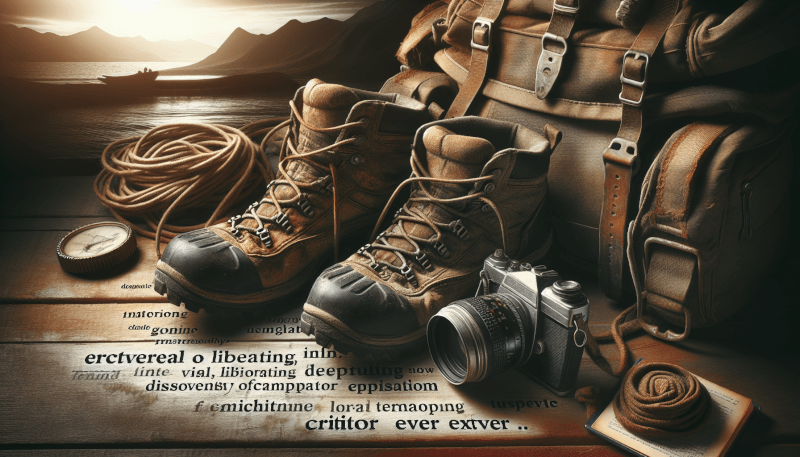
9. Campfire Stories
Campfire stories are a beloved tradition of camping and provide entertainment and a sense of togetherness. Whether they are spooky ghost stories, funny anecdotes, or tales of adventure and mishaps, campfire stories create an atmosphere of excitement and anticipation. Gather around the campfire, dim the lights, and let the storytelling begin.
9.1 Ghost Stories
Ghost stories are a popular genre of campfire stories that send shivers down your spine and make the dark woods come alive with eerie tales. From haunted cabins and mysterious apparitions to supernatural encounters, ghost stories create an air of suspense and intrigue. Turn off the flashlight, huddle closer to the fire, and get ready for a chilling tale.
9.2 Legends and Myths
Legends and myths have been passed down through generations and often have a connection to the natural world. These campfire stories share tales of mythical creatures, legendary figures, and extraordinary events. From the Loch Ness Monster to Bigfoot, legends and myths add an element of fantasy and imagination to the camping experience.
9.3 Funny Camping Tales
Funny camping tales bring laughter and joy to the campfire. These stories recount comical mishaps, humorous encounters, and amusing adventures. From failed attempts at pitching a tent to hilarious wildlife encounters, funny camping tales create an atmosphere of lightheartedness and camaraderie. Sit back, relax, and get ready for a good laugh around the fire.
9.4 Scary Encounters
Scary encounters stories recount hair-raising experiences and close calls while in the great outdoors. From encounters with dangerous wildlife to unexpected inclement weather, these stories highlight the importance of preparedness and quick thinking. Scary encounter stories serve as a reminder to respect the power and unpredictability of nature.
9.5 Adventure Mishaps
Adventure mishap stories share tales of unexpected challenges, mishaps, and lessons learned during outdoor adventures. From getting lost in the wilderness to overcoming physical and mental obstacles, these stories highlight the resilience and determination required in the face of adversity. Adventure mishap stories inspire and motivate campers to embrace challenges and grow from their experiences.
9.6 Campfire Songs
Campfire songs bring joy and a sense of unity to the camping experience. From classic folk songs to catchy sing-alongs, campfire songs create a musical ambiance around the fire. Gather around, grab your guitar or just use your voice, and join in the chorus as you sing songs that evoke nostalgia and create unforgettable memories.
9.7 Animal Encounters
Animal encounter stories share exciting and sometimes unexpected interactions with wildlife while camping. From encountering majestic creatures such as deer and eagles to witnessing rare and elusive species, these stories celebrate the beauty and mystique of the natural world. Animal encounter stories remind us of the incredible wildlife that surrounds us and the importance of coexistence and preservation.
9.8 Spooky Night Experiences
Spooky night experiences stories recount eerie and unexplained phenomena that occur in the dark of the night. From unexplained noises and shadows to strange lights and mysterious figures, these stories ignite the imagination and create an atmosphere of anticipation. Spooky night experiences stories transport campers to a world of mystery and wonder.
9.9 Unexplainable Phenomena
Unexplainable phenomena stories delve into the realm of the unknown and defy rational explanation. From unidentified flying objects and strange lights in the sky to unexplained apparitions and inexplicable occurrences, these stories challenge preconceived notions and push the boundaries of what is considered possible. Unexplainable phenomena stories spark curiosity and leave campers questioning the mysteries of the universe.
9.10 Celestial Wonders
Celestial wonders stories celebrate the awe-inspiring beauty of the night sky and the wonders of the universe. From witnessing meteor showers and eclipses to spotting distant galaxies and constellations, these stories inspire a sense of wonder and awe. Celestial wonders stories encourage campers to look up, appreciate the vastness of the cosmos, and ponder our place in the universe.
10. Must-Know Phrases
Camping is not just about enjoying the great outdoors; it is also about embracing a certain mindset and attitude toward nature. These must-know phrases encapsulate the essence of camping and the appreciation for the natural world.
10.1 Happy Camper
Being a happy camper means embracing the camping experience with a positive and enthusiastic attitude. It means being content and finding joy in the simple pleasures of nature, whether it’s the sound of birds chirping, the warmth of a campfire, or the breathtaking beauty of a sunrise. Being a happy camper is about embracing the present moment and finding happiness in the outdoors.
10.2 Roughing It
Roughing it is about embracing the challenges and discomforts that come with camping and outdoor adventures. It means foregoing modern conveniences and luxuries in exchange for a more primitive and authentic experience. Roughing it allows you to connect with nature on a deeper level and appreciate the simplicity and resilience required to thrive in the outdoors.
10.3 Sleeping Under the Stars
Sleeping under the stars is a magical and awe-inspiring experience. It involves setting up your sleeping bag or hammock in an open area and gazing up at the night sky. Sleeping under the stars allows you to escape the confines of four walls and connect with the vastness and beauty of the universe. It is a reminder of the wonders that lie beyond our daily lives and a testament to the freedom and serenity that camping provides.
10.4 Mother Nature
Mother Nature refers to the natural world and the forces that govern it. It encompasses everything from landscapes and ecosystems to weather patterns and wildlife. Recognizing and respecting the power and intricacy of Mother Nature is crucial for enjoying and preserving the environment. Mother Nature reminds us of the interconnectedness of all living beings and the importance of stewardship and sustainability.
10.5 Fresh Air
Fresh air is synonymous with the outdoors and represents the clean, unpolluted air found in natural environments. Breathing in fresh air is invigorating and rejuvenating, providing a sense of vitality and well-being. Fresh air revitalizes the body and mind and encourages us to slow down, take deep breaths, and appreciate the purity and simplicity of the natural world.
10.6 Nature’s Symphony
Nature’s symphony refers to the harmonious sounds of the outdoors, from the chirping of birds to the rustling of leaves and the gentle flow of a stream. It represents the symphony of life that plays out in the natural world, with each sound contributing to the overall tapestry of nature. Nature’s symphony is a soothing and melodic backdrop to camping adventures, providing a sense of tranquility and connection.
10.7 Roughing It
Roughing it is about embracing the challenges and discomforts that come with camping and outdoor adventures. It means foregoing modern conveniences and luxuries in exchange for a more primitive and authentic experience. Roughing it allows you to connect with nature on a deeper level and appreciate the simplicity and resilience required to thrive in the outdoors.
10.8 Nature Lover
A nature lover is someone who deeply appreciates and connects with the natural world. It is someone who finds solace, inspiration, and joy in the beauty of nature. Being a nature lover means valuing and prioritizing environmental conservation and taking steps to minimize one’s impact on the Earth. Nature lovers are ambassadors for the outdoors and dedicate themselves to preserving and safeguarding the natural world.
10.9 Adventure Seeker
An adventure seeker is someone who actively seeks out and embraces new and thrilling experiences. It is someone who craves excitement, challenges, and adrenaline. Adventure seekers are always on the lookout for new outdoor activities, whether it’s rock climbing, backpacking, or kayaking. Being an adventure seeker means pushing one’s limits, stepping out of one’s comfort zone, and making memories that last a lifetime.
10.10 Unplug and Recharge
Unplug and recharge refers to the act of disconnecting from technology and immersing oneself in the tranquility and simplicity of nature. It means taking a break from screens, notifications, and daily distractions, and allowing oneself to unwind and recharge in the outdoors. Unplugging and recharging allows for reflection, rejuvenation, and a renewed sense of perspective. It is a vital practice for maintaining mental and emotional well-being in our increasingly connected and fast-paced world.
In conclusion, camping offers a diverse range of experiences and activities for outdoor enthusiasts of all levels. From choosing the right gear to setting up a comfortable campsite, developing outdoor skills, and enjoying adventure activities, camping provides endless opportunities for exploration, relaxation, and connection with nature. Whether you prefer the simplicity of tent camping or the luxury of glamping, there is a camping style that suits your preferences and allows you to create lifelong memories. So pack your gear, embrace the happy camper mindset, and embark on your next camping adventure to experience the wonders of the natural world.

